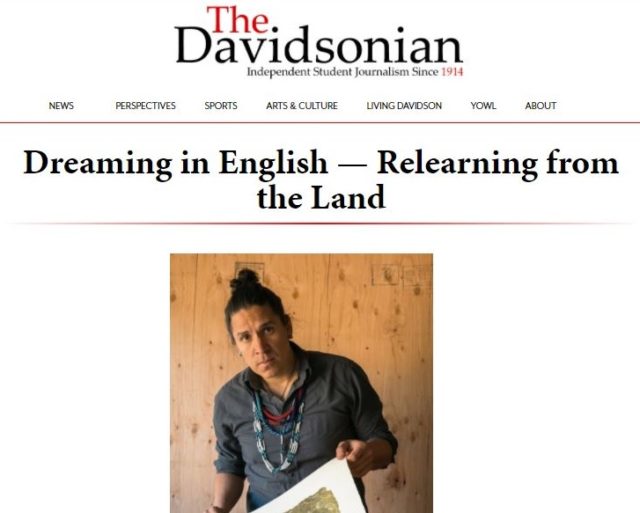Nicholas Galanin did not begin his talk at Davidson College with esoteric and abstract metaphors, but rather with a collection of photographs from his life in his hometown of Sitka, Alaska — images of fishing, various projects he’s working on, like a dugout canoe he is carving with his uncle and cousin, the community, and wildlife. By beginning with these pictures, he underscored how one’s practice of art exists in the everyday and is tied to our connection to the earth: a profound reminder. Galanin, a Tlingit and Unangax Indigenous artist, creates art that pulls from both contemporary Western art and Indigenous art practices. His exhibition, Dreaming in English, is available for view in the Van Every/Smith Galleries from now until December 9, 2021. The artist talk was October 20th, where Galanin joined us via Zoom to speak with Lia Newman, the curator of the Van Every/Smith Galleries, Dr. Rose Stremlau, a Davidson history professor specializing in the Indigenous South, and Catawba artist and storyteller Deslesslin “Roo” George-Warren.
Galanin emphasized the Indigenous relationship to the land and how imperative it is to care for land in the same way as art, language, and culture. Acknowledging the land is understanding the process of surviving. European colonialism creates a strict linear narrative of time and separates people from their link to the earth. Galanin rejects both of these ideas. He believes in a “muscle memory of harvesting the land,” a memory of ancestors, and the “deep connections of joy that pass through us as part of a continuum,” which all fight together to be seen and heard and trusted. Dreaming in English is borne from those memories and relationships.
Read the full article in The Davidsonian.

